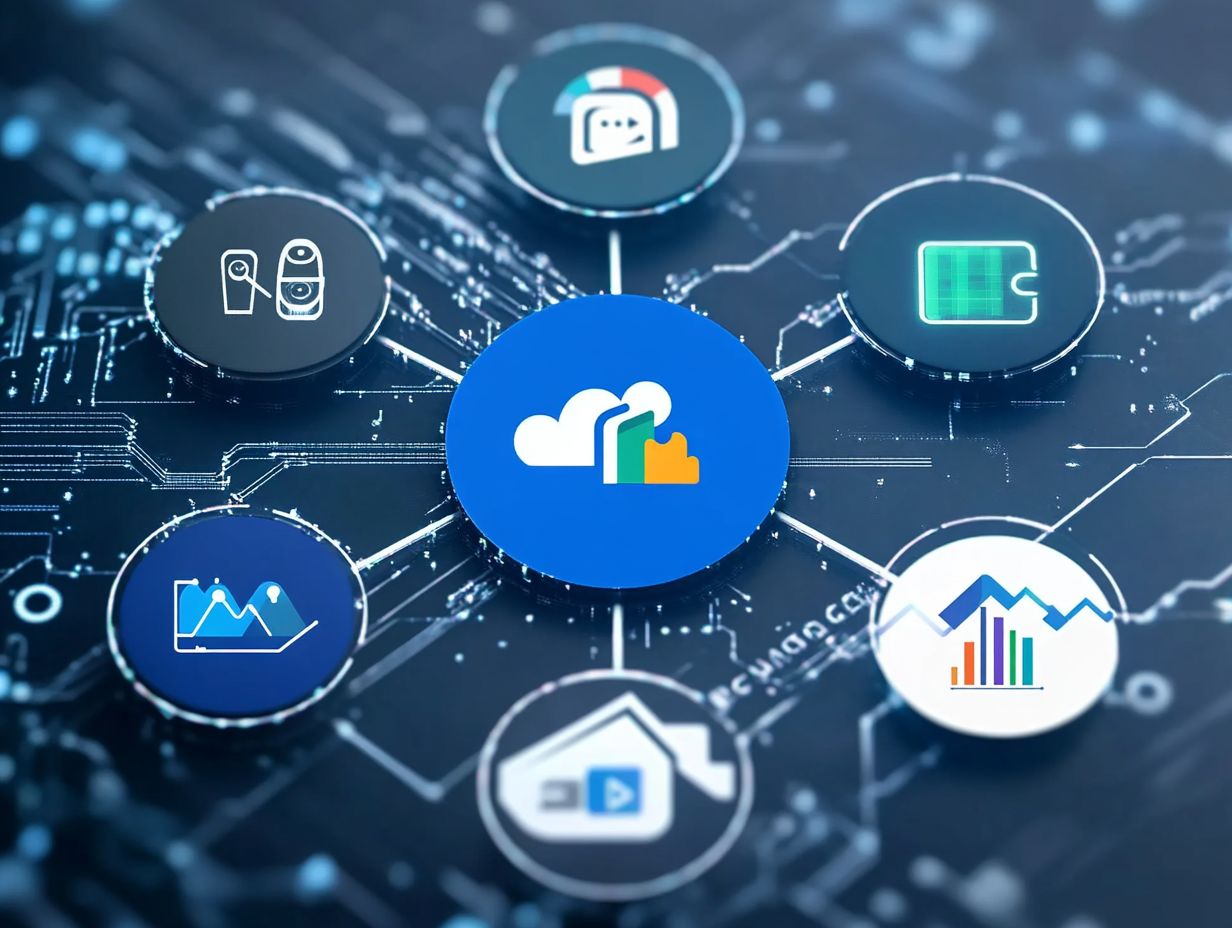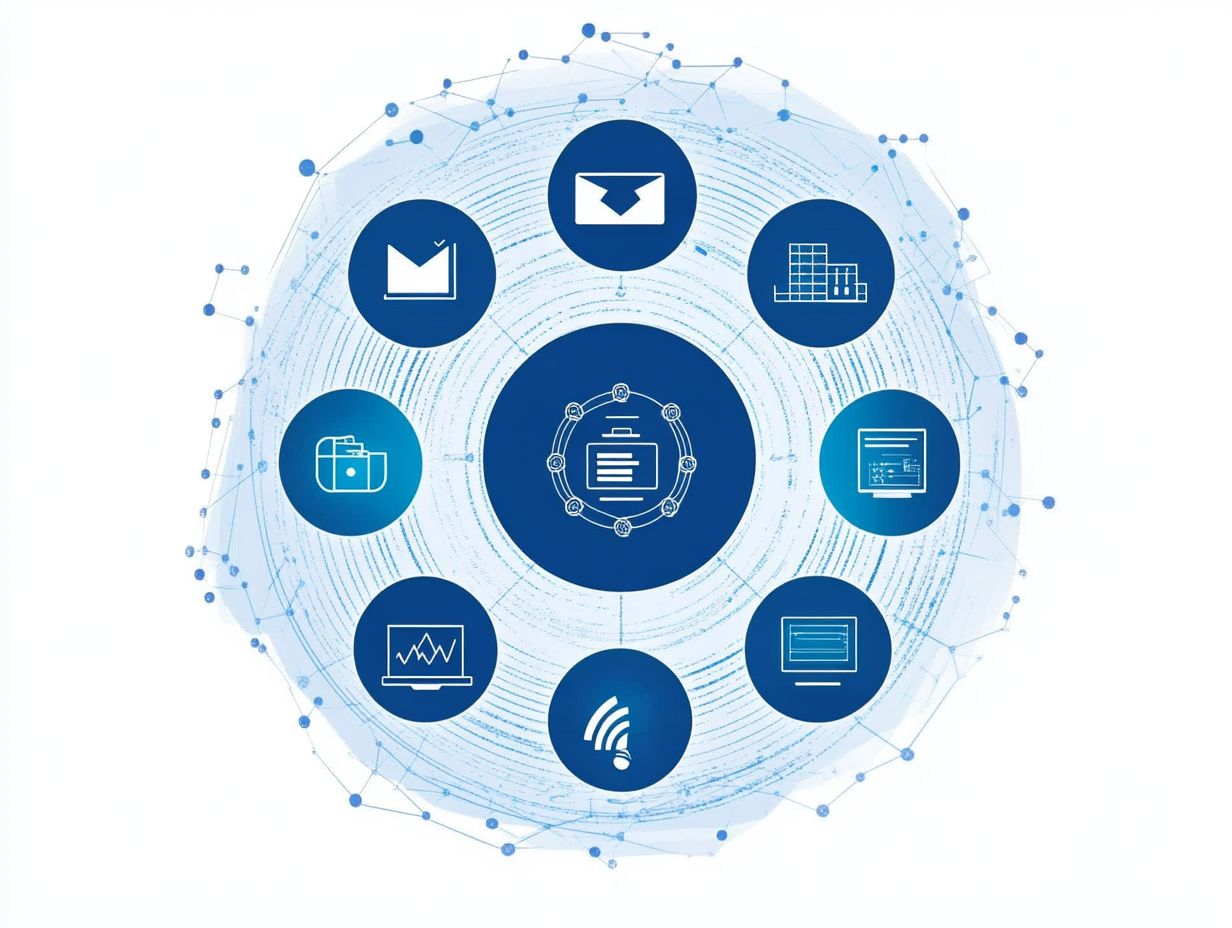5 Key Players in the PaaS Market
In today’s fast-paced tech landscape, Platform as a Service (PaaS) is a cloud service that allows developers to build, test, and deploy applications without having to manage the underlying infrastructure. It has become an essential resource, enabling you to build, test, and deploy applications with remarkable efficiency.
This article delves into five notable players in the PaaS market Amazon Web Services, Microsoft Azure, Google Cloud Platform, IBM Cloud, and Oracle Cloud each bringing unique strengths to the table.
Alongside this overview, you ll discover what PaaS is all about, along with its advantages and disadvantages, market growth dynamics, key features to consider, and the emerging trends that are shaping the future.
Whether you re a business leader or an aspiring developer, this guide will empower you to navigate the complexities of PaaS and choose the best solution tailored to your specific needs.
Contents
- Key Takeaways:
- 1. Amazon Web Services (AWS)
- 2. Microsoft Azure
- 3. Google Cloud Platform
- 4. IBM Cloud
- 5. Oracle Cloud
- What Is PaaS and How Does It Work?
- Preguntas Frecuentes
- Qu es PaaS y por qu es importante en el mercado?
- Qui nes son los actores clave en el mercado de PaaS?
- Qu diferencia a estos 5 actores clave de otros proveedores de PaaS?
- Cu les son algunas de las caracter sticas y servicios notables que ofrecen estos 5 actores clave?
- Cu l es la mejor opci n para mi negocio?
- Existen actores emergentes en el mercado de PaaS?
Key Takeaways:

The top players in the PaaS market include AWS, Microsoft Azure, Google Cloud Platform, IBM Cloud, and Oracle Cloud.
PaaS is cost-effective and scalable, but be mindful of potential vendor lock-in and limited control.
The PaaS market has seen significant growth in recent years, driven by the rise of cloud computing and the need for agile and flexible solutions, including the top PaaS trends in 2024.
1. Amazon Web Services (AWS)
AWS stands out as a leader in cloud services, offering a range of solutions to simplify application deployment and management for businesses of all sizes.
With its robust platform, AWS offers services like AWS Elastic Beanstalk, making it effortless to deploy applications across various programming languages. Its multicloud PaaS capabilities help you optimize cloud infrastructure for better performance and cost efficiency.
This service provides an intuitive interface, allowing you to focus on what you do best coding while AWS seamlessly manages the underlying infrastructure. Its compatibility with popular programming languages like Python and Node.js makes it particularly attractive for modern web application development.
AWS excels at managing services like Amazon RDS and Lambda, addressing diverse database and serverless computing requirements, which perfectly complements its DevOps platform solutions.
As you consider migrating to the cloud, you can adopt strategies like lift-and-shift or re-architecting for enhanced integration. Utilize tools like AWS Migration Hub for greater visibility and control. Discover how AWS can transform your operations and boost performance!
2. Microsoft Azure
Microsoft Azure offers a powerful suite of cloud services tailored for seamless application hosting and management. It enables you to build, deploy, and manage applications effortlessly within a cloud-native environment.
What sets this platform apart is its comprehensive DevOps toolkit, streamlining workflows and enhancing team collaboration. This empowers your organization to refine both development and operational processes effortlessly.
Azure’s containerization solutions, like Azure Kubernetes Service, deliver remarkable flexibility and scalability, simplifying the deployment and management of containerized applications for your teams.
In the competitive cloud landscape, Azure stands toe-to-toe with AWS and Google Cloud by highlighting its integrated security features and advanced analytics capabilities. These not only enhance application performance but also strengthen overall security.
These compelling strengths make Azure an excellent choice for businesses eager to innovate and thrive in today s digital ecosystem. Ready to elevate your business?
3. Google Cloud Platform
Google Cloud Platform (GCP) stands out for its powerful tools designed for cloud migration and application deployment. With services like Google App Engine, the process is simplified for developers, all while automatically scaling to enhance your application metrics.
What really sets GCP apart is its seamless integration with cutting-edge machine learning capabilities and big data services, such as BigQuery. This allows for rapid data analysis and valuable insights with ease.
You can leverage these features to elevate your applications while keeping infrastructure concerns at bay.
When compared to AWS and Azure, GCP often offers a more cost-effective solution for similar workloads, especially for data processing and storage pricing. The user experience is notably intuitive, featuring a clean interface and easily navigable dashboards.
This design approach facilitates quicker adaptation and encourages efficient cloud management, making your cloud journey smoother and more productive.
4. IBM Cloud

IBM Cloud offers a versatile container-based PaaS that supports modern application development while facilitating seamless integration with Mendix aPaaS for low-code development solutions.
This platform supercharges your efficiency and enables robust hybrid cloud capabilities, allowing for a smooth blend of on-premise data with cloud resources.
By taking advantage of this infrastructure, you can deploy advanced applications that swiftly adapt to changing market demands while maintaining control over your data.
IBM Cloud’s scalability and flexibility enable faster innovation, optimized workflows, and higher availability for your applications. It’s the ideal choice for enterprises eager to enhance their digital transformation journey.
Don’t miss out on the chance to innovate faster with IBM Cloud!
5. Oracle Cloud
Oracle Cloud provides an extensive range of services tailored for application development and deployment. Its advanced resource management and load balancing tools ensure optimal performance.
What sets this cloud platform apart is its robust database services that seamlessly integrate into various application development lifecycles. This allows for efficient data management from creation to deployment.
By facilitating a smooth connection between your data and applications, Oracle Cloud enables you to build scalable and reliable solutions.
In a competitive landscape where major players like AWS and Microsoft Azure reign, Oracle Cloud stands out with its enterprise-grade offerings. It’s particularly beneficial for organizations aiming to enhance operational agility while keeping costs in check.
What Is PaaS and How Does It Work?
Platform as a Service (PaaS) is a cloud computing model that provides a seamless platform to build, deploy, and manage applications efficiently throughout their entire lifecycle, without the headaches of maintaining the underlying infrastructure.
This managed service allows you to concentrate on crafting application features while using tools that help package applications for easier deployment.
By abstracting the hardware and software layers, PaaS cuts down on deployment time and enhances collaboration within your team by offering access to shared development environments.
You can take advantage of various integrated frameworks and tools, such as Ruby on Rails and JavaScript libraries, to speed up your development process.
With enhanced data analytics capabilities, you’ll be able to monitor and adjust performance in real time, leading to optimal resource utilization.
Leading PaaS providers like Google App Engine and Microsoft Azure deliver robust solutions that enable rapid application deployment while ensuring high security and scalability, including support for popular programming languages for PaaS.
Explore these platforms for your own projects and experience the benefits of PaaS today!
What Are the Advantages of Using PaaS?
Using Platform as a Service (PaaS) offers many benefits. You get automated scaling that boosts performance while reducing operational tasks.
Consider services like Google App Engine and Heroku. They adjust resources based on demand, allowing you to focus on building features instead of managing infrastructure.
The strong security measures in PaaS solutions protect your applications. With services like AWS Elastic Beanstalk’s compliance and encryption, you don’t need a large in-house security team.
This method speeds up software development and cuts costs. You can adopt advanced technologies without hefty upfront investments.
What Are the Disadvantages of Using PaaS?

PaaS has its drawbacks. You may encounter application failures because of reliance on the provider’s infrastructure.
Vendor lock-in is another risk. This can complicate cloud migration if you decide to switch providers.
PaaS might limit your flexibility and customization options. You may find it hard to tailor solutions to your specific needs.
It s vital to think about long-term costs. These platforms can get expensive, especially if you need to scale.
Evaluate potential providers carefully. Focus on their ability to adapt to your changing needs.
How Has the PaaS Market Grown in Recent Years?
The PaaS market has grown incredibly in recent years, driven by advancements in cloud technology and the need for efficient application development. For insights on the leading options, check out the top 10 PaaS providers in 2024.
Major players like Google Cloud, Microsoft Azure, and Amazon Web Services are seeing impressive revenue growth. For example, Google Cloud’s PaaS offerings grew by over 40% year-over-year, showcasing some of the real-world examples of PaaS success.
Innovations in container registries have changed how you manage and deploy applications. Tools like Kubernetes help achieve agility and scalability in deployment.
What Are the Key Features to Look for in a PaaS Provider?
When choosing a PaaS provider, focus on essential features. Look for support through the entire application lifecycle and strong security measures.
Good PaaS solutions improve your development process and boost team collaboration. For example, pick a provider that supports continuous integration to minimize downtime.
Use analytics tools to track user interactions and performance. This helps you make necessary adjustments.
Lastly, prioritize security features like automated compliance checks. This protects user data and builds trust.
What Are the Emerging Trends in the PaaS Market?
Emerging trends in the PaaS market focus on container technologies and DevOps integration. This shift leads to cloud-native development environments that boost collaboration and streamline deployment.
This change reflects a broader move towards agile software development. With low-code platforms, even non-developers can join app creation, speeding up your time-to-market.
Serverless technology lets you write code without managing infrastructure, promoting scalability and efficiency.
These trends are set to shape future PaaS offerings. They will simplify integrating various tools, resulting in more innovative applications.
Preguntas Frecuentes

Qu es PaaS y por qu es importante en el mercado?
PaaS (Plataforma como Servicio) es un modelo de computaci n en la nube. Proporciona una plataforma para desarrollar, ejecutar y gestionar aplicaciones sin la complejidad de la infraestructura subyacente.
Es clave porque ofrece soluciones rentables y r pidas para desplegar aplicaciones.
Qui nes son los actores clave en el mercado de PaaS?
Los 5 actores clave son Amazon Web Services (AWS), Microsoft Azure, Google Cloud Platform, IBM Cloud y Salesforce. Estas empresas son l deres en la industria de la computaci n en la nube.
Qu diferencia a estos 5 actores clave de otros proveedores de PaaS?
La extensa infraestructura y el alcance global los diferencian. Tienen una fuerte presencia en m ltiples regiones y ofrecen soluciones amplias.
Cu les son algunas de las caracter sticas y servicios notables que ofrecen estos 5 actores clave?
Cada actor clave tiene un conjunto nico de servicios. Por ejemplo, AWS ofrece Elastic Beanstalk, Lambda y Elastic Container Service.
Microsoft Azure proporciona Azure Functions y App Service. Google Cloud ofrece App Engine y Cloud Functions.
Cu l es la mejor opci n para mi negocio?
La mejor elecci n depende de tus necesidades espec ficas. Investiga y compara caracter sticas y precios para encontrar la opci n que mejor se alinee con tus objetivos.
Existen actores emergentes en el mercado de PaaS?
S , hay nuevos actores en el mercado que est n creciendo. DigitalOcean, Red Hat OpenShift y Oracle Cloud Platform est n entre los m s destacados.
Es vital prestar atenci n a estos emergentes, ya que pueden ofrecer soluciones nicas que beneficien a tu negocio.





